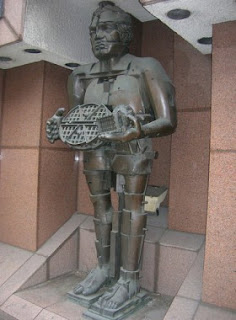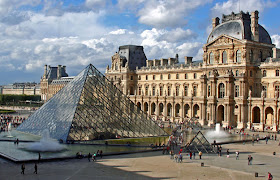 |
SimCity 2000 (1984) designed by Will Wright and Fred Haslam
|
The New York based Museum of Modern Art (
MoMA) has recently acquired a selection of 14 video games including Pac-Man, Tetris, SimCity2000 and Portal. These video games will form a new category of artworks held in the MoMA collection.
The MoMA
press release announcing the acquisition poses the question ‘are video games art?’ and immediately answers it with a very self assured ‘they sure are’. However, it goes on to say, ‘but [video games] are also design, and a design approach is what we chose for this new foray into this universe’. So whilst MoMA considers video games to be art, it is classifying them under the broader heading of ‘interaction design’.
How do you display a video game in an art gallery?
There are a number of commentators who have suggested that MoMA is going to turn into an arcade in order to display these new acquisitions. Curating the games is considerably more challenging than that. For example, how do you display a game which is designed to be played without risking destroying it through repeated game play? Should you have consoles available for MoMA videos to play the games? Should they be the original consoles/computers? Does it matter?
MoMA has sought advice on this and many other legal, preservation and design matters. MoMA concluded that they have to obtain copies in the game’s original software format and the original hardware ‘wherever possible’. They also sought to acquire the original source code to enable translation in the future if the original technology becomes obsolete (hence, what I imagine is, a fairly hefty price tag for some of these games).
In terms of display, if the game is short enough (e.g. Passage) the game could be made playable in its entirety in the gallery. They will put on interactive demonstrations for longer games and even create guided tours of the alternative worlds in games like Dwarf Fortress. As MoMA puts it, the acquisition will enable the museum to ‘study, preserve, and exhibit video games as part of its Architecture and Design collection.’
How were the games chosen?
MoMA explains that it followed the same approach to the acquisition of the games that it takes with other items in the collection i.e. ‘a combination of historical and cultural relevance, aesthetic expression, functional and structural soundness, innovative approaches to technology and behavior, and a successful synthesis of materials and techniques in achieving the goal set by the initial program.’ Because of this artistic focus, the MoMA selection doesn’t include some games which might have seemed logical choices from a historical significance perspective. Arguably if MoMA hasn't selected a game for inclusion it is less 'artistic' but there may be any number of factors as to why games have not been included so if a favourite game isn't included, don't get too upset!
 |
Tetris, 1984. Designed by Alexey Pajitnov
|
What does the law say?
There have been relatively few cases over the years to consider what form of rights video games are protected by and how close you have to be for infringement. However, it is relatively settled law that video games fall into the UK definition of a copyright work as a series of graphic (or artistic) works and as a literary work in terms of the underlying source code. Games can also incorporate short films, usually include a soundtrack (another right), and in some circumstances, may arguably be films in their own right.
Nova v Mazooma is still the main UK case – two similar pool games were found not to infringe as the copying was not of a ‘substantial part’ of the original game. This case analysed the game as a series of ‘graphic’ or artistic works.
For a full run through of all the recent cases and a comprehensive review of gaming law in general, the reader should look no further than Jas Purewal’s excellent
Gamerlaw blog.
Across the pond, the argument that video games could be art was boosted in the US last year when the Supreme Court ruled they were like other works of art and their right to free speech should be protected under the First Amendment. See here for the
NY Times' analysis. Thus, from a legal perspective at least, it is fairly settled that video games can be works of art.
What do the critics say?
Not all critics agree with MoMA’s assertion that video games can be works of art. The Guardian’s Jonathan Jones has been particularly critical – his
article is a fairly provocative read. There is a certain amount of sneering about putting Tetris in the same galleries as works by Pollock and Picasso but the argument that they cannot be works of art because they require human interaction to be appreciated doesn’t seem to be particularly powerful – the definition of art is changing all the time. Most modern installations require at least minimal human interaction and a limited view of art as something that you merely gaze on has become outdated.
Should video games be treated as art? Your comments are always appreciated.
There is more to come…
These 14 games are the ‘seedbed for an initial wish list of about 40 to be acquired in the near future’. Games on the wish list include Spacewar, Pong, Snake (the original not the Nokia phone version), Donkey Kong, Legend of Zelda and Super Mario Bros. (making Shigeru Miyamoto the most sought after artist/game designer). The first 14 video games will be installed in MoMA’s Philip Johnson Galleries from March 2013.
You can view The Guardian’s slide show of some of the games
here.
You can read more about the acquisition in The Independent
here.
You can view YouTube gameplay for each of the games via The Week
here.





























